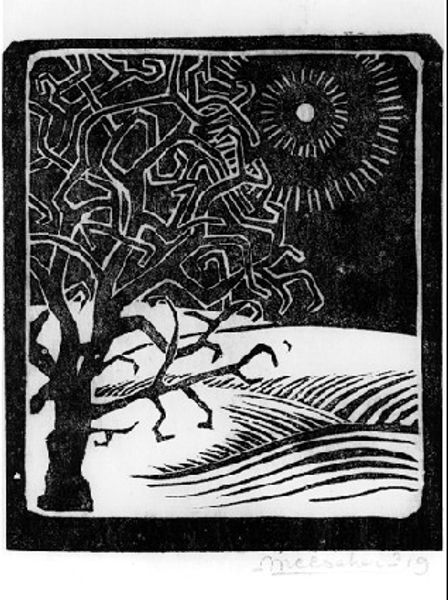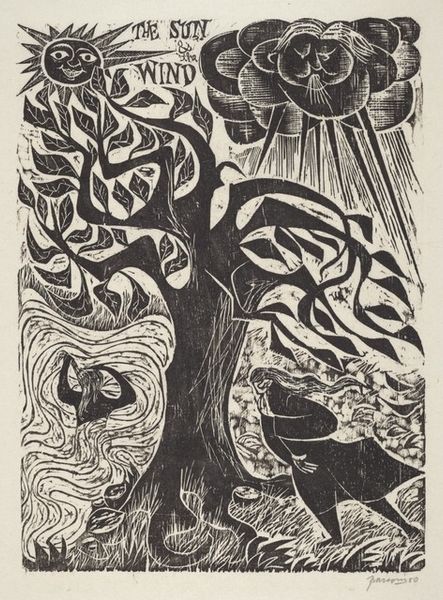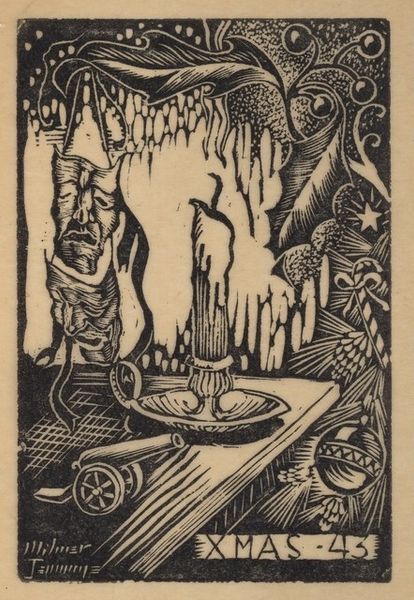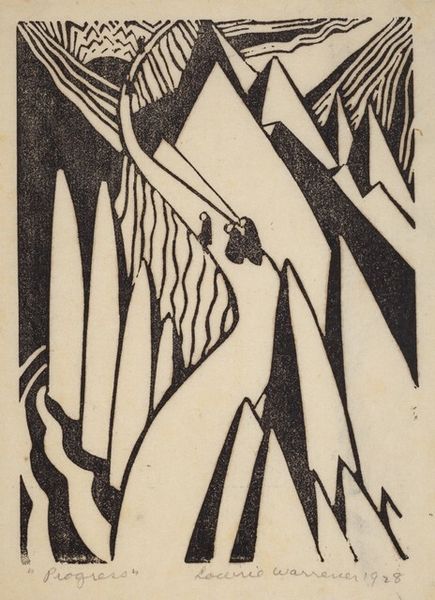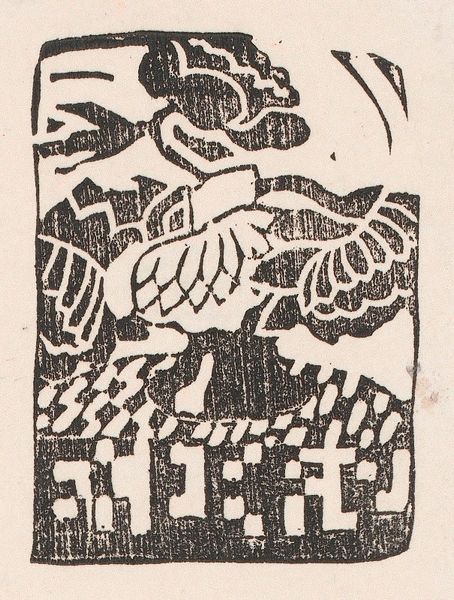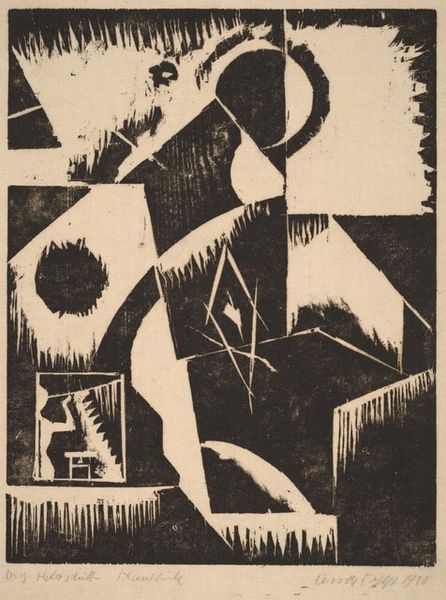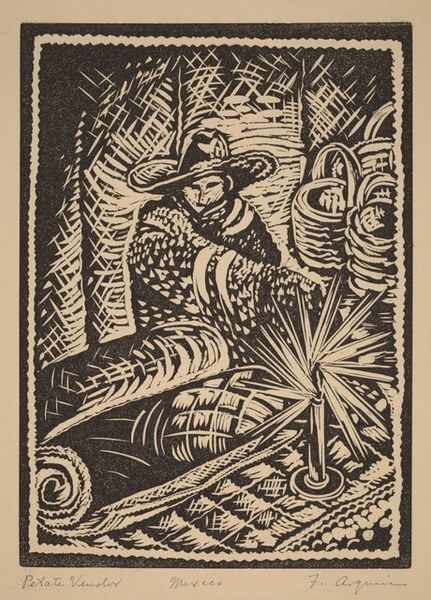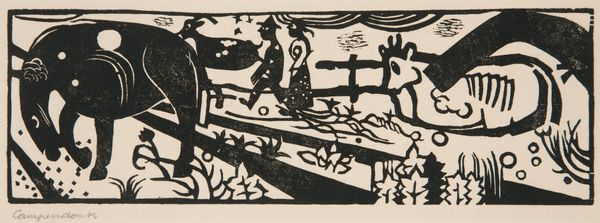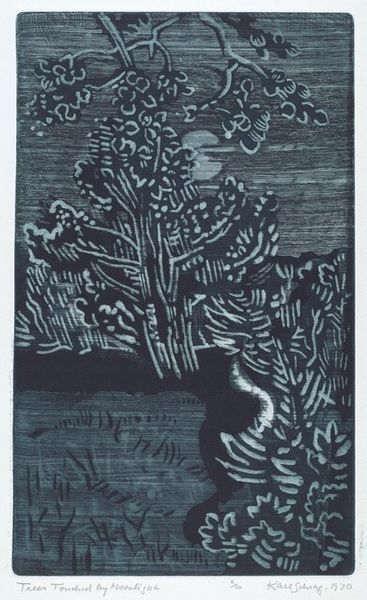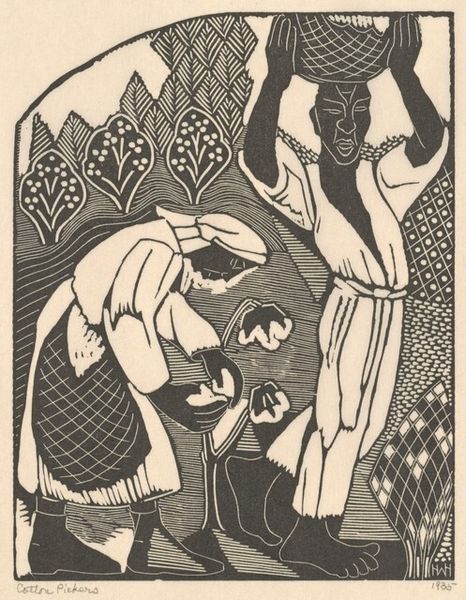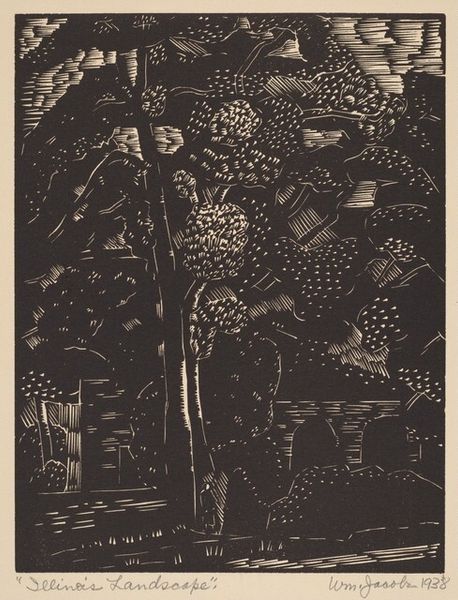
print, linocut
# print
#
linocut
#
landscape
#
german-expressionism
#
figuration
#
linocut print
#
line
Dimensions: plate: 10 x 8.4 cm (3 15/16 x 3 5/16 in.) sheet: 17.3 x 11.1 cm (6 13/16 x 4 3/8 in.)
Copyright: National Gallery of Art: CC0 1.0
M.C. Escher created "The Borger Oak, Oosterbeek" using a woodcut, a relief printing process, sometime before 1972. The stark contrast between black and white underscores the print’s bold, graphic quality. Escher meticulously carved away the wood around the design’s lines, leaving only the raised areas to receive ink. The pressure of the printing press then transferred the image onto paper, resulting in the work you see here. Woodcut, an age-old technique, links Escher to a rich tradition of printmaking. But while woodcut has often been associated with folk art and graphic design, Escher used it to create an intricate scene with a strong sense of depth and texture. Consider, too, the labor involved in making this print. The act of carving the wood block required skilled handwork and meticulous attention to detail. So, next time you encounter a print, remember the material and the making process. Only then can you fully appreciate its social and cultural significance, blurring the lines between craft and art.
Comments
No comments
Be the first to comment and join the conversation on the ultimate creative platform.
